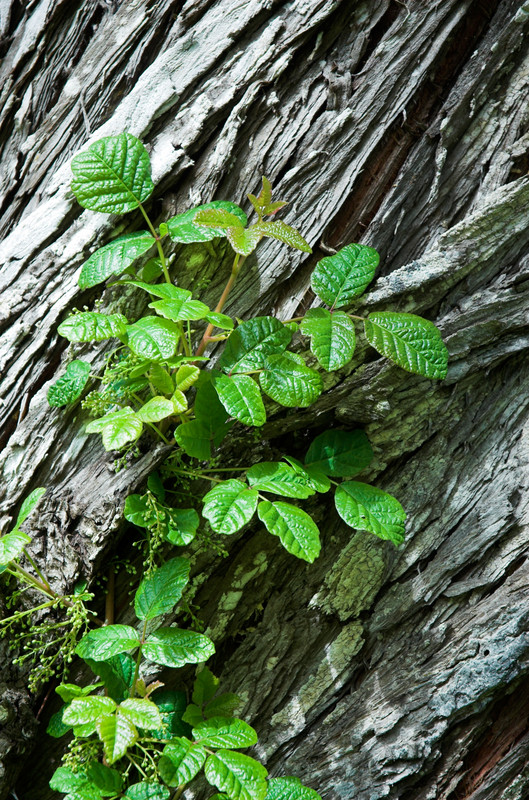Poison oak is a perennial deciduous plant that grows as a shrub or vine. All parts of the plant are covered with a highly toxic resin that can cause severe dermatitis.
Botanical name: Toxicodendron diversilobum
Organic Weed Control at Amazon
- Monterey Vegetable Pre-Emergent Weed Control
- Homietina Heavy Duty Weed Barrier Fabric 4×300-feet
- Preen Natural Vegetable Garden Weed Preventer
- Green Gobbler 20% Vinegar Weed and Grass Killer
- WeedGuard Plus Biodegradable Paper Weed Barrier

Poison oak description and life cycle
- Poison oak grows as a dense shrub to 6½ feet tall; in deep shade becomes a vine.
- Stems are slender and woody.
- Leaves grow on long petioles with soft hairs; compound leaves are divided into three leaflets.
- Leaf margins will have deep teeth, scallops, or lobes and resemble a maple or oak leaf in shape.
- The central leaf has a petiole; side leaflets have no stem.
- New growth is red, becomes green in summer, then turns scarlet in fall.
- Flowers grow in clusters; small whitish flowers with five petals.
- Blooms late spring to early summer.
- Green to light tan-white berries in fall; berries are eaten by birds, deer, and rabbits.
- Reproduces by seeds and underground stolons—horizontal roots.
- Grow in sun or partial shade.
Poison oak root system
Poison oak has a tenacious underground root system that spreads for several yards. Underground stolons–horizontal roots–are often woody and resist being uprooted. Poison oak vines also form aerial roots that cling to trees, shrubs, and fences. These roots can be woody and rope-like.
Poison oak organic controls
- Wear protective clothing and gloves; all parts of the plant are poisonous.
- Dig the plant out with a shovel or pick; remove woody stolons. It is essential to remove the entire plant including its roots. Rootstock left behind will vigorously re-sprout.
- If touched, wash immediately with half and half mixture of alcohol and water mixed with 5 percent chlorine; do not wash with oil-based soap, you will spread toxins.
Poison oak range
California, Nevada, Oregon, Washington, British Columbia, and the Southeastern United States
Four quick ways to control weeds
- Weed early. Control weeds in the first month after they germinate.
- Weed often. Hand weed every two weeks through the season.
- Weed by hand when the soil is wet (best to get roots).
- Use a hoe if the soil is dry. Decapitate weeds before they flower and drop seed.
Related articles:
Vegetable Garden Organic Weed Control
Vegetable Garden Organic Pest Control
Vegetable Garden Diseases Problem Solver
Garden Planning Books at Amazon:
- Vegetable Garden Almanac & Planner
- Kitchen Garden Grower’s Guide Vegetable Encyclopedia
- Vegetable Garden Grower’s Guide
- Tomato Grower’s Answer Book















